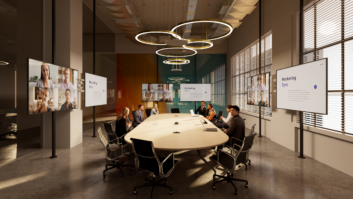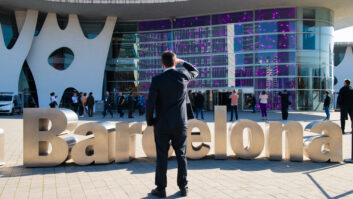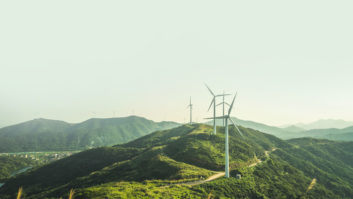With seemingly endless wildfires, flooding and other natural world-related disasters, climate change has even been able to push Covid-19 off the top of the news agenda on a few occasions during the past two years. Moreover, with a series of fresh measures seeking to hold organisations and individuals to higher targets about carbon output and sustainability in the offing, it’s only set to become more prominent.
And – one might say – not before time. Although the decarbonisation objectives that culminate in the 2050 Net Zero target are not new, it would be putting it politely to state that, until recently, many countries’ approaches toward them had been unfocused. A lot of ‘should dos’ and ‘want to dos’ were voiced where firm commitments were required. Regrettably, this is an impression that the COP26 UN Climate Change Conference held last year did little to dispel.
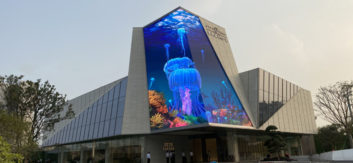 Yet even if the measures often seem more local- or regionally-driven than truly global, progress is being made, especially around the crucial issue of corporate reporting of environmental data. Last spring the EU confirmed a marked increase in the number of companies that must comply with the Corporate Sustainability Reporting Directive, while in the UK 2020 saw a big jump in corporations including SECR (Streamlined Energy and Carbon Reporting) in their annual reports for the first time. It seems reasonable to expect the scope of the requirements – which have already grown to include large unquoted companies and LLPs (limited liability partnerships) – to be revised again to encompass SMEs in the not too distant future.
Yet even if the measures often seem more local- or regionally-driven than truly global, progress is being made, especially around the crucial issue of corporate reporting of environmental data. Last spring the EU confirmed a marked increase in the number of companies that must comply with the Corporate Sustainability Reporting Directive, while in the UK 2020 saw a big jump in corporations including SECR (Streamlined Energy and Carbon Reporting) in their annual reports for the first time. It seems reasonable to expect the scope of the requirements – which have already grown to include large unquoted companies and LLPs (limited liability partnerships) – to be revised again to encompass SMEs in the not too distant future.
Simultaneously, the public discussion around greenwashing has become much more salient. From newspaper leaders to conferences, the extent to which some organisations have attempted to mask their actual environmental impact has become part of regular conversation. In the case of manufacturers, it is increasingly deemed unacceptable for companies to be sourcing raw materials in a non-sustainable or ethical way – and customers are making their choices accordingly. Conversely, it is also becoming more common for companies to act en masse in response to specific regional issues – something that the pleasingly united response to Russia’s invasion of Ukraine has only further underlined.
So it seemed like an ideal time to check in with some leading manufacturers and find out how much progress is being made in pro AV around the issue of sustainability – from more eco-friendly production processes to recyclability targets and beyond.
FERTILE GROUND
Not surprisingly given their potentially significant energy consumption, pro displays have long been an especially fertile area for new environmental measures. The migration towards LED over the past 10 years has already brought huge benefits, often in the region of 50%+ energy savings compared to older designs. But now many manufacturers are going much further: for example, last November saw LED display solutions manufacturer Absen introduce a new ‘green initiative’, Absen Green, that unifies its efforts in sustainability, environmental protection, energy efficiency and corporate social responsibility.
As well as energy-saving products such as the A1099 large outdoor LED display and A1021D/A1621D LED digital DOOH advertising solutions, Absen has recently outlined an energy efficiency programme that has already “saved 700,000 tons of CO2 over the last five years and made Absen a carbon-neutral business”. The company has also committed to using only eco-friendly raw materials – all compliant with the European Union’s RoHS 2.0 directive restricting the use of hazardous substances – and ensuring that all its products meet EU waste electrical and electronic equipment (WEEE) regulations.
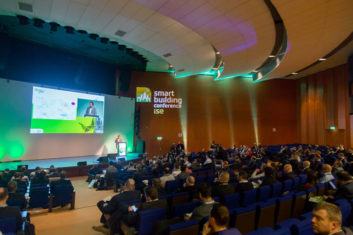 In addition, all Absen displays are compatible with 3C, CE, UL, ETL and other domestic and international safety standards – certifying that the products meet requirements for fire protection, electromagnetic interference, AC dielectric withstand, current leakage, insulation resistance and ground resistance, as well as OHSMS health standards on eye protection (from blue light), electromagnetic compatibility, and more.
In addition, all Absen displays are compatible with 3C, CE, UL, ETL and other domestic and international safety standards – certifying that the products meet requirements for fire protection, electromagnetic interference, AC dielectric withstand, current leakage, insulation resistance and ground resistance, as well as OHSMS health standards on eye protection (from blue light), electromagnetic compatibility, and more.
The company has even focused on “less obvious sources of pollution: light and sound”. Hence all Absen products feature a fanless design, which allows them to operate at a noise pressure of under 10dBd (for reference, the volume of a normal conversation is about 60dB), while its innovative automatic brightness adjustment technology ensures its displays adjust to the brightness of the surrounding environment.
Rubel Rengel, Absen’s senior vice-president of global business development, comments: “From using only environmentally friendly materials to reducing energy usage, waste, and light and sound pollution, the initiatives set out under Absen Green show how Absen is meeting its responsibilities to the planet and humanity. The adverse effects of climate change are undeniable and we want to be part of the solution, now and into the future.” (For more on Absen’s approach to sustainability, see page 13.)
SHARP FOCUS
Another display technology leader, Sharp NEC Display Solutions Europe, was only formed through a joint venture in 2020, making it difficult to comment on past environmental milestones. But focusing on the Sharp business, SVP marketing and product manager Ian Barnard draws attention to the 2019 formulation of Sharp Eco Vision 2050: “This long-term environmental vision sets out two key sustainable development goals to reach by 2050: to create more clean energy than the total amount of energy consumed in Sharp’s entire supply chain, and achieve net zero CO2 emissions in Sharp’s business activities. We have already embarked on initiatives to achieve [these goals].”
Across the Sharp/NEC business, other measures include the optimisation of packaging – thereby maximising the number of units that can be transported per pallet – and the use of 100% recyclable packaging material. There is also a strong focus on recyclability, including in the large-format displays which “at 97.4% are almost entirely recyclable, which is remarkable in our industry,” according to Barnard, who also points to the predominant use of metal housings and components for large-format displays and LED modules as opposed to plastic or polycarbonate.
Barnard notes that an assessment of GHG (greenhouse gas) emissions for the entire value chain has shown that more than 80% of emissions are associated with the use of sold products. Based on this fact, the company has prioritised the reduction of environmental impact associated with product usage by customers and Sharp business activities such as manufacturing, including the incorporation of IoT devices and cloud technology to reduce GHG emissions during product use by identifying and harnessing greater efficiencies.
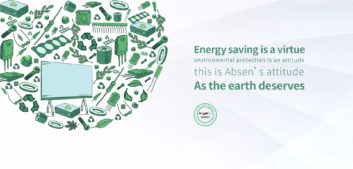 Looking ahead, Barnard indicates that he would like to see more industry action along the lines of the Liaison Group of Japanese Electrical and Electronics Industries for Global Warming Prevention – a group in which Sharp participates that is focused on further accelerating the pace of industry-wide action to combat climate change. He also urges the need for more “evidence-based results to ensure real actionable change is taking place within the industry”.
Looking ahead, Barnard indicates that he would like to see more industry action along the lines of the Liaison Group of Japanese Electrical and Electronics Industries for Global Warming Prevention – a group in which Sharp participates that is focused on further accelerating the pace of industry-wide action to combat climate change. He also urges the need for more “evidence-based results to ensure real actionable change is taking place within the industry”.
Accordingly, Sharp is participating in the Science Based Targets Initiative (SBTi), which is geared towards pursuing action that will achieve “real and reliable results” in the fight against climate change. Barnard reveals: “Sharp has submitted its GHG reduction targets to the SBTi team, and they have certified them as being scientifically based and in conformance with the Paris Agreement. Sharp’s published GHG Emissions Reductions Targets include, by fiscal 2031, to reduce GHG emissions
by 33% compared with fiscal 2018.”
Andreea Timis, communications director at The LED Studio, highlights a two-pronged approach revolving around recyclability credentials and power consumption, remarking: “We have significantly reduced the power consumption of our products. We recently ran a power consumption comparison between our Fusion [outdoor billboard solution] and a competing product. Based on electrician readings, the Fusion consumed on average up to four times less than the competing product.”
Timis also highlights the multiple benefits of the company’s deployment of aluminium die-cast cabinets. As a recyclable material with endothermic benefits, aluminium absorbs heat generated by components used within an LED display. “This unique feature negates the need for cooling fans (typically high power consuming and made of non-recyclable plastics), increases product lifespan from an average of 5 to 11 years, and results in less e-waste.”
Like many other companies in this space, The LED Studio is also giving thought to the end-result of climate change – in other words, the sort of natural disasters that are already forcing many sectors to prepare more rigorously for disaster recovery and business continuity. Timis points to the company’s proprietary software, Screenmetrics, that enables remote monitoring from a control centre located in Swindon, UK: “This allows us to identify potential issues and dramatically reduces the number of technician trips.”
As developer of Common Cathode Technology that emphasises power efficiency for direct-view LED displays, SiliconCore is another company with a long track-record of green initiatives. For one of its latest development in this area, SiliconCore also took account of new requirements raised by Covid-19 and the global supply chain shortages.
Eric Li, CEO at SiliconCore Technology, remarks: “Our most recent milestone was the by-product of the drive to maintain sustainable processes while overcoming challenges faced by the pandemic. As a chip manufacturer, we had to quickly address challenges faced by the semiconductor shortage and the rising material costs. Our R&D team developed a new manufacturing process to produce driver chips that provide better performance and less wafer demand.
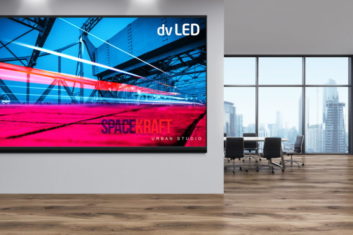 “This completely changed our production processes, and for the better. Our new SCL8081 driver chip has faster clock speeds than its predecessor, enabling it to operate more pixels per driver chip with fewer pin counts. [This] means fewer wafers are required to drive the same number of pixels as before, [hence] a significant reduction in the demand toward wafer foundry. This resulted in our facilities becoming more efficient with less environmental wastage.”
“This completely changed our production processes, and for the better. Our new SCL8081 driver chip has faster clock speeds than its predecessor, enabling it to operate more pixels per driver chip with fewer pin counts. [This] means fewer wafers are required to drive the same number of pixels as before, [hence] a significant reduction in the demand toward wafer foundry. This resulted in our facilities becoming more efficient with less environmental wastage.”
Whilst the focus of this article has been on visual technology, Futuresource Consulting senior market analyst James Kirby confirms that progress in pro audio is also ongoing. “The move to Class D [amplifier topologies] has helped power consumption as they are way more efficient, although there are other reasons for using Class D such as weight, size, portability and cost,” he says.
The choice of raw materials and the environmental impact of touring remain hot topics. Neodymium, often used in audio drivers, is in escalating demand due to factors such as the rise in popularity of electric vehicles; Kirby notes that “alternatives are limited and it’s a factor the industry will likely face for some time”. Meanwhile, the switch to relying more on systems installed permanently in venues – as opposed to tour rental equipment – is helping many productions to tour more sustainably.
ENVIRONMENTAL IMPACT
More generally, it is apparent that – to an extent that was not the case even 2 or 3 years ago – pro AV is now continuously evaluating its environmental impact and acting accordingly. As recently as January this year, Lang AG announced that its Green AV Initiative would seek to identify which products and technologies are needed for the industry to act more sustainability. As part of this process the company will undertake a review of its manufacturing, supply chains and operations.
With the latest Intergovernmental Panel on Climate Change (IPCC) report warning that climate change is taking place even quicker than feared, all sectors need to take meaningful action. Fortunately, the signs are that AV could soon be in the vanguard of this literally life-or-death transformation.

